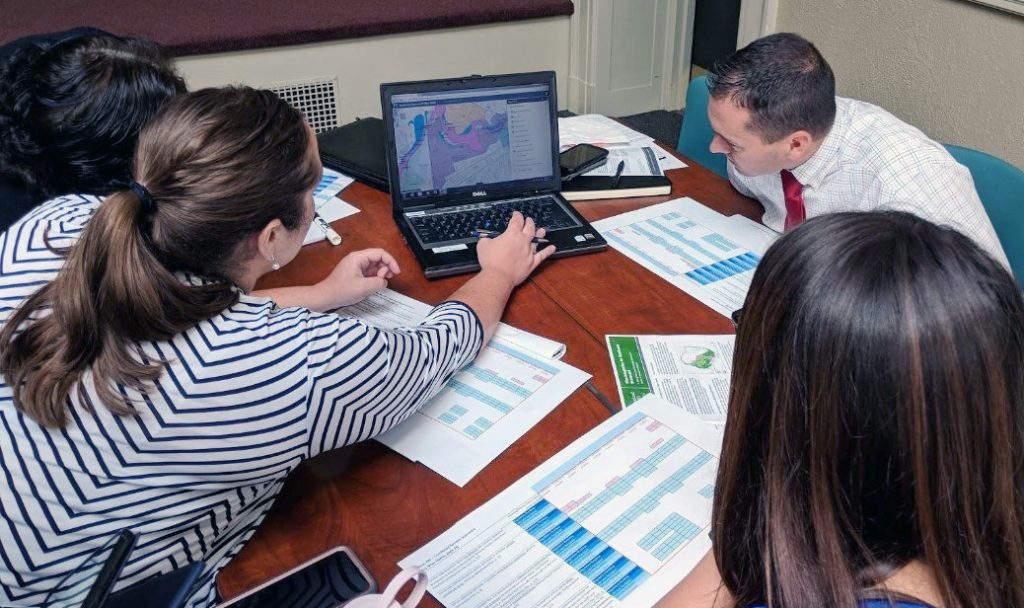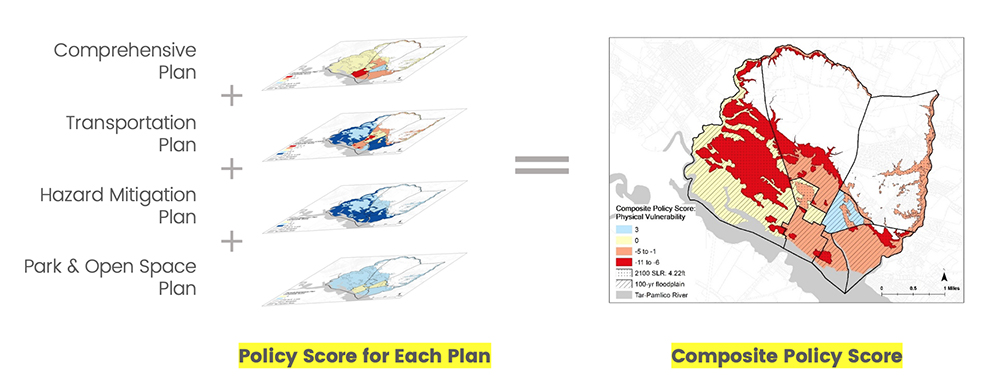
Past years have brought an increase in intense, landfalling hurricanes, loss of property from expansive wildfires and coastal flooding on days both rainy and sunny. These events have put greater emphasis on community resilience – and on making adjustments to the way communities plan for natural hazards.
In a new partnership, the country’s largest group of planning professionals will incorporate a planning scorecard that helps communities take steps to protect themselves from the impacts of these hazards into its offerings.

The American Planning Association (APA) has formally integrated the Plan Integration for Resilience Scorecard™ (PIRS)™, developed by Department of Homeland Security Coastal Resilience Center of Excellence (CRC) researchers, into a set of accessible tools for APA members. Dr. Phil Berke, a Research Professor in the Department of City and Regional Planning at the University of North Carolina at Chapel Hill, and Jaimie Masterson, Associate Director of Texas Target Communities and Associate Director of Engagement for the Institute for Sustainable Communities at Texas A&M University, lead the PIRS™ project.

As part of the agreement, APA will designate PIRS™ as a national standard and resource for building local capacity to integrate resilience across planning sectors. The project will build on previous work developing and testing PIRS™ to expand its application and impact on a national scale.
“Ensuring that plans, policies, and codes are integrated at the local level is a high priority for planners and APA members across the country,” said Joseph DeAngelis, Research Manager with APA. “This partnership between APA and the Coastal Resilience Center is an outstanding opportunity to align PIRS™ with existing and future APA resources, and to bring these tools to a national audience of planners and allied professionals eager to advance community resilience.”
PIRS™ is the result of several years of work within the CRC. Using the tool, communities can craft a comprehensive approach to hazard mitigation through local planning. PIRS™ allows local practitioners to self-evaluate their community’s plans and make adjustments to bring them into better alignment. Strategies for applying PIRS™ can be precisely tailored to each community’s specific needs, so that their planning documents work together to reduce hazard vulnerability.
The APA-CRC partnership will include applying PIRS™ to a broader set of communities in diverse geographic and socioeconomic settings, and refining training materials to assist local planners and others to integrate mitigation into all relevant sectors of urban development.
“Planning for the impacts of future events, including more common flooding, requires concerted community action to address,” CRC Executive Director Tom Richardson said. “The Scorecard is a very useful tool for planners to address their resilience needs without creating conflicting plans of action.”

How partnership will work
In 2020, APA will produce a Planning Advisory Service publication outlining ways PIRS™ can be used in conjunction with existing, well-established APA tools. Continuing into 2021, the CRC-APA partnership will focus on fully integrating PIRS™ into APA’s existing outreach and education tools. Berke and Masterson are currently writing a detailed set of case studies based on the experience of the three pilot communities in applying the Scorecard.
Planners need to be educated on how to integrate hazard planning and risk assessment, including projected future conditions, into their networks of plans, programs, initiatives, and day-to-day operations, the project leads said.
“As change agents and cross-sectoral conveners in local governments, professional planners are well positioned to facilitate application of the Scorecard in communities across the country,” Dr. Berke said. “However, education, training, and development of resources to make the Scorecard accessible to planners and their partners in local government are needed to realize this potential.”

Practicing planners, including those working for local and regional jurisdictions and governmental agencies, as well as consultants who assist communities in preparing and implementing long-range plans, are the primary end users of products developed by this project.
Many of APA’s educational offerings count towards the continuing education/maintenance (referred to as CM) requirements set by the American Institute of Certified Planners (AICP), which certifies professional planners and is part of APA.
PIRS™ materials and case studies are available at mitigationguide.org.
